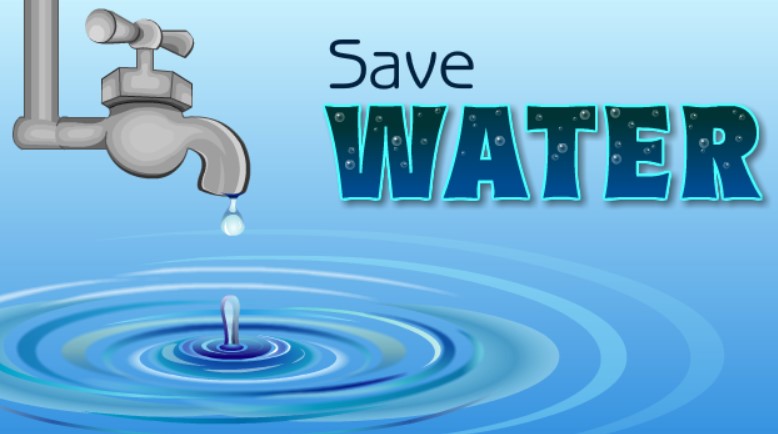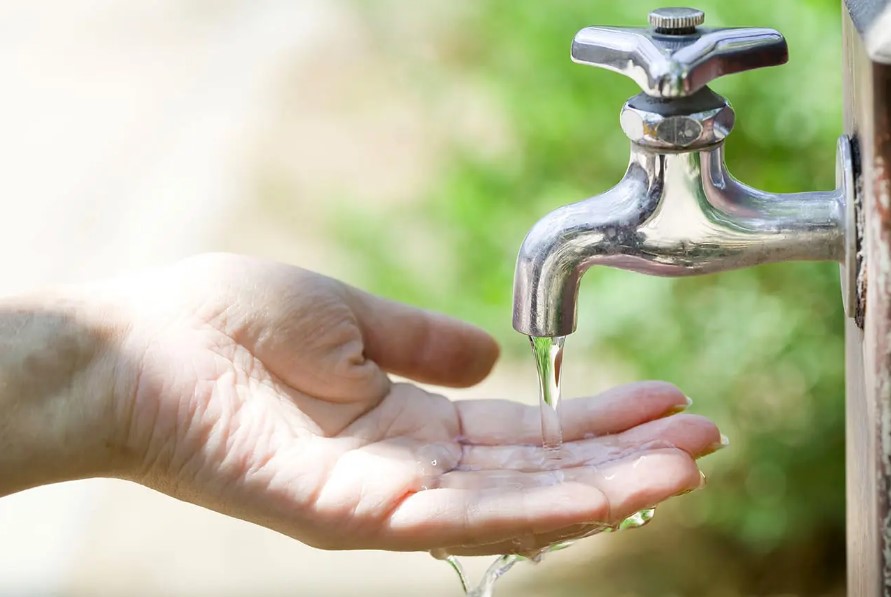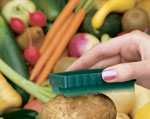Water Conservation
Water conservation is the practice of using water efficiently to reduce unnecessary water usage. According to Fresh Water Watch, water conservation is important because fresh clean water is a limited resource, as well as a costly one

Water conservation includes all the policies, strategies and activities to sustainably manage the natural resource of fresh water, to protect the hydrosphere, and to meet the current and future human demand (thus avoiding water scarcity).
Population, household size and growth and affluence all affect how much water is used. Factors such as climate change have increased pressures on natural water resources especially in manufacturing and agricultural irrigation.
Many countries have already implemented policies aimed at water conservation, with much success.
The key activities to conserve water are as follows: any beneficial reduction in water loss, use and waste of resources, avoiding any damage to water quality; and improving water management practices that reduce the use or enhance the beneficial use of water.
Technology solutions exist for households, commercial and agricultural applications. Water conservation programs involved in social solutions are typically initiated at the local level, by either municipal water utilities or regional governments.
The key activities to conserve water are as follows:
- Any beneficial reduction in water loss, use and waste of resources.
- Avoiding any damage to water quality.
- Improving water management practices that reduce the use or enhance the beneficial use of water.
Avoiding any damage to water quality.
Improving water management practices that reduce the use or enhance the beneficial use of water.

The key activities to conserve water are as follows:
- Any beneficial reduction in water loss, use and waste of resources.
- Avoiding any damage to water quality.
- Improving water management practices that reduce the use or enhance the beneficial use of water.
One of the strategies in water conservation is rain water harvesting. Digging ponds, lakes, canals, expanding the water reservoir, and installing rain water catching ducts and filtration systems on homes are different methods of harvesting rain water. Many people in many countries keep clean containers so they can boil it and drink it, which is useful to supply water to the needy. Harvested and filtered rain water can be used for toilets, home gardening, lawn irrigation, and small scale agriculture.
Another strategy in water conservation is protecting groundwater resources. When precipitation occurs, some infiltrates the soil and goes underground. Water in this saturation zone is called groundwater. Contamination of groundwater causes the groundwater water supply to not be able to be used as a resource of fresh drinking water and the natural regeneration of contaminated groundwater can take years to replenish.
Some examples of potential sources of groundwater contamination include storage tanks, septic systems, uncontrolled hazardous waste, landfills, atmospheric contaminants, chemicals, and road salts. Contamination of groundwater decreases the replenishment of available freshwater so taking preventative measures by protecting groundwater resources from contamination is an important aspect of water conservation.
An additional strategy to water conservation is practicing sustainable methods of utilizing groundwater resources. Groundwater flows due to gravity and eventually discharges into streams. Excess pumping of groundwater leads to a decrease in groundwater levels and if continued it can exhaust the resource.
Ground and surface waters are connected and overuse of groundwater can reduce and, in extreme examples, diminish the water supply of lakes, rivers, and streams. In coastal regions, over pumping groundwater can increase saltwater intrusion which results in the contamination of groundwater water supply. Sustainable use of groundwater is essential in water conservation.
A fundamental component to water conservation strategy is communication and education outreach of different water programs. Developing communication that educates science to land managers, policy makers, farmers, and the general public is another important strategy utilized in water conservation. Communication of the science of how water systems work is an important aspect when creating a management plan to conserve that system and is often used for ensuring the right management plan to be put into action.
The conservation of water is extremely important in order to preserve wildlife habitats. There are many organisms in temperate regions who are affected by shortages in water. Additionally, many freshwater organisms are increasingly feeling the impacts of water pollution as it disrupts the ecosystem.
25 ways to save water
Check your toilet for leaks
Stop using your toilet as an ashtray or wastebasket
Put a plastic bottle in your toilet tank
Take shorter showers
Next to air, water is the most important element for the preservation of life. Water is a finite commodity which, if not managed properly, will result in shortages in the near future. Water conservation can go a long way to help alleviate these impending shortages.
 1. Check your toilet for leaks.
1. Check your toilet for leaks.
Put a few drops of food coloring in your toilet tank. If, without flushing, the coloring begins to appear in the bowl., you have a leak that may be wasting more than 100 gallons of water a day.
2. Stop using your toilet as an ashtray or wastebasket
Every cigarette butt or tissue you flush away also flushes away five to seven gallons of water.
3. Put a plastic bottle in your toilet tank
Put an inch or two of sand or pebbles in the bottom of a one liter bottle to weigh it down. Fill the rest of the bottle with water and put it in your toilet tank, safely away from the operating mechanism. In an average home, the bottle may save five gallons or more of water every day without harming the efficiency of the toilet. If your tank is big enough, you may even be able to put in two bottles.
4. Take shorter showers
A typical shower uses five to ten gallons of water a minute. Limit your showers to the time it takes to soap up, wash down and rise off.
5. Install water-saving shower heads or flow restrictors
Your hardware or plumbing supply store stocks inexpensive shower heads or flow restrictors that will cut your shower flow to about three gallons a minute instead of five to ten. They are easy to install, and your showers will still be cleansing and refreshing.
6. Take baths
A partially filled tub uses less water than all but the shortest showers.
 7. Turn off the water while brushing your teeth
7. Turn off the water while brushing your teeth
Before brushing, wet your brush and fill a glass for rinsing your mouth.
8. Turn off the water while shaving
Fill the bottom of the sink with a few inches of warm water in which to rinse your razor.
9. Check faucets and pipes for leaks
Even a small drip can waste 50 or more gallons of water a day.
10. Use your automatic dishwasher for full loads only
Running your dishwasher less often saves water and money.
11. Use your automatic washing machine only for full loads only
Your automatic washer uses 30 to 35 gallons per cycle.
 12. Don’t let the faucet run while you clean vegetables
12. Don’t let the faucet run while you clean vegetables
Rinse your vegetables instead in a bowl or sink full of clean water.
13. Keep a bottle of drinking water in the refrigerator
This puts a stop to the wasteful practice of running tap water to cool it for drinking.
14. If you wash dishes by hand, don’t leave the water running for rinsing
If you have two sinks, fill one with rinse water. If you have only one sink, first gather all your washed dishes in a dish rack, then rinse them quickly with a spray device or a pan of water.
15. Check faucets and pipes for leaks
Leaks waste water 24 hours a day, seven days a week. An inexpensive washer is usually enough to stop them.
 16. Water your lawn only when it needs it
16. Water your lawn only when it needs it
Watering on a regular schedule doesn’t allow for cool spells or rainfall which reduce the need for watering. Step on some grass. If it springs back up when you move your foot, it doesn’t need water.
17. Deep-soak your lawn
When you do water your lawn, water it long enough for water to seep down to the roots where it is needed. A light sprinkling that sits on the surface will simply evaporate and be wasted.
18. Water during the cool parts of the day
Early morning is better than dusk since it helps prevent the growth of fungus.
19. Don’t water the gutter
Position your sprinklers so that water lands on your lawn or garden, not in areas where it does no good. Also, avoid watering on windy days when much of your water may be carried off to the streets and sidewalks.
20. Plant drought-resistant trees and plants
Many beautiful trees and plants thrive without irrigation.
21. Put a layer of mulch around trees and plants.
Mulch slows the evaporation of moisture.
22. Use a broom to clean driveways, sidewalks and steps
Using a hose wastes hundreds and hundreds of gallons of water.
23. Don’t run the hose while washing your car
Soap down your car from a pail of soapy water. Use a hose only to rinse it off.
24. Tell your children not to play with the hose and sprinklers
Children love to play under a hose or sprinkler on a hot day. Unfortunately, this practice is extremely wasteful of precious water and should be discouraged.
25. Check for leaks in pipes, hoses faucets and couplings
Leaks outside the house are easier to ignore since they since they don’t mess up the floor or keep you awake at night. However, they can be even more wasteful than inside water leaks especially when they occur on your main water line.
How we work
Discussion
Strategy
Implementation
Results
Support
Prices
Maintenance and repairs of damages
FREE!
Five thousand litters (5,000L)
N1,000
Ten thousand litters (10,000L)
N1,500
Fifteen thousand litters (10,000L)
N2,500
Twenty thousand litters (20,000L)
N3,000
Twenty-Five thousand litters (25,000L)
